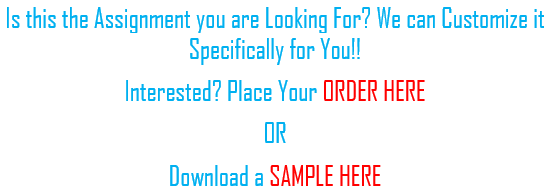Safety Protocol Against COVID19. The clinical problem identified for this quality improvement project was the safety of frontline health care workers amid Covid-19. The problem was identified by analyzing the statistics of the frontline health care workers who had been infected and others who died of Covid-19 since it was declared a global pandemic. According to the statistics, healthcare workers were experiencing high levels of exposure because they were interacting with Covid-19 patients directly. They represented the most significant percentage of new Covid-19 infections (Joshi, 2021). Among the main statistics that informed the decision to consider the safety of frontline health care workers amid Covid-19 as an important clinical problem was New York City, where frontline healthcare workers had been severely affected by the disease since its outbreak.
Implementation of safety protocols to address the safety of the frontline health care workers amid Covid-19 was considered the most effective solution. This solution covered the aspects of reasonable working hours, protection of wards, and operation rooms. According to the proposed solution, limiting frontline healthcare working hours to 4 hours in quarantine wards and 7 hours in cleaning areas on regular days would reduce their workload and minimize their risks of contracting Covid-19 due to the severe fatigue that reduces their concentration capacity. Ward protection would involve sub-dividing wards to facilitate the interaction between Covid-19 patients and healthcare workers attending to them (Liu et al., 2021). Protection of operation rooms was aimed at reducing the risk of contamination in operations. This was prioritized because activities in operation rooms involve close contacts and interactions between providers and patients. Safety Protocol Against COVID19
We Can Help Customize A Similar Assignment! Interested? ORDER HERE
Implementation Plan
Achieving the safety of frontline healthcare workers can’t happen without effective outcome measurements. This is because the healthcare industry administration and regulatory approaches are complex. According to World Health Organization (WHO), outcome measures are the changes in the health of an individual, population, or a group of people attributed to a particular intervention or a series of interventions. The changes proposed in the solution will be measured by considering the ability of health facilities to implement the proposed measures and the willingness of the frontline health care workers to adopt the proposed changes. For instance, the proposed changes will be considered impactful if healthcare organizations conform to the proposed working hours for the frontline healthcare workers (State et al., 2018). On the other hand, the solution will be considered adequate if the frontline healthcare workers follow the proposed safety protocols in Covid-19 wards and operation rooms. The improvement goal will be reached when frontline healthcare workers get infected and die of Covid-19 will start reducing.
Outcomes required to Reach Project Goals
- Limitation of the working hours for the frontline healthcare workers to a maximum of 4 hours in quarantine wards and 7 hours cleaning areas
- Sub-division of Covid-19 wards into quarantine and buffer zones to minimize the interaction of health care workers and patients
- Suspension of some of the surgeries and observance of safety protocols by surgeons such as wearing full-face masks and disinfecting hands with concentrated sanitizers
Responsibilities
Limitation of frontline health worker’s working hours will be the responsibility of the health facility management. This is because management occupies the leadership role in any organization. Regulating employees’ working hours is a leadership issue that will require several adjustments in the organization to balance operations. Some of the adjustments that may be needed will include contracting or increasing the number of healthcare workers. Similarly, the sub-division of Covid-19 wards is the responsibility of the management because it will involve redesigning the already existing health facility wards. The involvement of healthcare workers is also important in this stage because they are the ones who will be using the redesigned wards. Lastly, the suspension of some surgeries to protect operation rooms will be a collective responsibility of surgeons and the health facility management. This is because the management cannot determine surgeries that are not emergency, but surgeons can evaluate. However, the responsibility of wearing masks and using PPEs is the sole responsibility of the surgeons.
We Can Help Customize A Similar Assignment! Interested? ORDER HERE
Actions for the Outcomes
Limitation of the frontline health care worker’s working hours to a maximum of 4 hours in quarantine wards and 7 hours cleaning areas will require rescheduling the existing timetable to accommodate changes. Also, hiring additional healthcare workers, either permanently or on a contract basis, will be necessary because of the reduced working hours. On the other hand, the sub-division of the Covid-19 wards will require redesigning the existing wards to create additional zones. Boards will be used to subdivide the wards into the required zones. Suspension of some of the surgeries and observance of safety protocols by surgeons such as wearing full-face masks and disinfecting hands with concentrated sanitizers will need to create public awareness on surgeries offered in the health facility and those that will not be offered. Observance of safety protocols by surgeons will require training of the surgeons on how to wear masks, use the PPEs and disinfect themselves.Safety Protocol Against COVID19
Monitoring Progress & EBP Model
One of the most important aspects of a project is measuring the progress of the tasks involved. There are several ways through which the project progress will be monitored. They include creating the project outline, establishing the project goals and milestones, and establishing clear deadlines. Working with the project team members to develop the outline will be a great way of tracking the project’s progress. This is because each member will have an opportunity to contribute ideas for setting realistic goals and learning what is expected of them as part of the project team. On the other hand, setting up tailored goals and milestones for project team members will go a long way in ensuring team satisfaction. It keeps the project team focused on meeting the project goals and helping the project leader stay on top of the operations. Keeping the big picture of the project in mind will play an important role in implementing smaller goals and pointing progress (Kimmons, 2017). Keeping the project end goals in sight and being clear about the deadlines will help the project team stay on track and complete tasks without getting overly stressed and overwhelmed. The IOWA model of evidence-based practice is the most effective model for the project. It guides nurses to utilize research findings to improve patient care. It involves identifying triggers where EBP change is warranted, prioritizing problems, and forming a team to develop, evaluate and implement the proposed change (Hanrahan et al., 2019). Safety Protocol Against COVID19
Evaluation Plan
The measurable outcomes for the project will include the working hours for the frontline health care workers, the number of frontline health care workers infected with Covid-19 within a specified duration, and the number of frontline health care workers who die of Covid-19 within a certain duration. The data to be collected with be based entirely on the measurable outcomes (working hours for the frontline health care workers, the number of frontline health care workers infected with Covid-19 within a specified duration, and the number of frontline health care workers who die of Covid-19 within a certain duration). After three months, the data collected with be analyzed to determine the success and failures of the proposed solution for adjustments.
References
Hanrahan, K., Fowler, C., & McCarthy, A. M. (2019). Iowa Model Revised: Research and Evidence-based Practice Application. Journal of Pediatric Nursing, 48, 121–122. https://doi.org/10.1016/j.pedn.2019.04.023
Joshi, S. K. (2021). Occupational health and safety of the frontline healthcare workers in Nepal in COVID-19 pandemic. International Journal of Occupational Safety and Health, 11(1), 1–2. https://doi.org/10.3126/ijosh.v11i1.35543
Kimmons, R. L. (2017). Monitoring Progress. PROJECT MANAGEMENT, 543–549. https://doi.org/10.1201/9780203741771-67
Liu, Y., Yang, S., Hung, M., Tong, W., & Liu, Y. (2021). Corrigendum: Protecting Healthcare Workers Amid the COVID-19 Crisis: A Safety Protocol in Wuhan. Frontiers in Public Health, 9. https://doi.org/10.3389/fpubh.2021.660323
State, C., Newbold, E., Chiplen, F., & Gough, A. (2018). P-65 Hospice and hospital palliative outcome measures project. Poster Presentations.
https://doi.org/10.1136/bmjspcare-2018-hospiceabs.90


